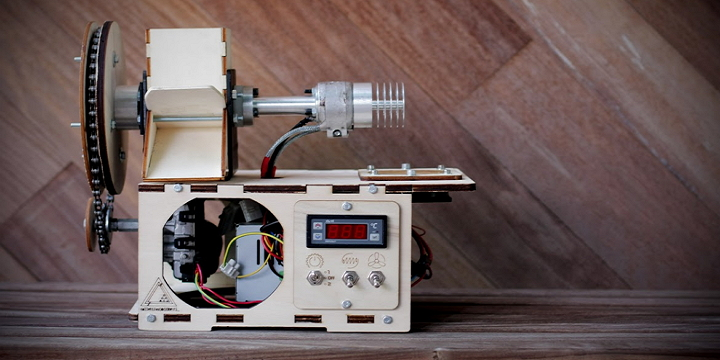
They say the device was built in answer to a desire by users of 3D printers to produce their own plastic filament. It’s all about reducing the cost of printing, saving on materials, and being able to experience the potential of 3D printing.
The Felfil was designed and built by the Collettivo Cocomeri, a team of young designers who took part in the Ecodesign Master’s Degree program at the Politecnico and the TreataBit Project.
Aimed primarily at producing filaments from recycled materials, plastic waste and unsuccessful models, it can also be used with industrial pellets. Developed at the Fablab Turin, the developers say they thought it was critical to “give new life to unused components” and employ parts which are readily available within local markets or via self-production at a makerspace.
All the technical details and instructions for building the extruder can be downloaded at felfil.com, and the device has been released under the non-commercial Creative Commons license.
The extruder uses recycled and low-cost components such as a windscreen wiper motor and a simple bicycle chain transmission.
The Collettivo Cocomeri is also currently at work developing a new version of the device, which they plant to produce in small production runs to keep prices low and ensure top performance.
The team says the Felfil takes inspiration from much larger industrial extruders, and it’s capable of extruding filament from any thermoplastic polymer whose melting temperature doesn’t exceed 300° C. A “resistance band” surrounding a steel melting chamber does its work via a screw connected to an electric motor, which develops approximately 9 Nm of torque to ensure constant pressure. Materials like pellets or granules of plastic are poured into a hopper for production.
A brass nozzles cuts down on friction and a small grid prevents solids from interfering with smooth extrusion–the nozzle is designed and shaped specifically to dissipate heat from the chamber. The Collettivo Cocomeri say the lower temperatures at the later stages of extrusion provides greater consistency in the size of the filament. Depending upon the nozzle chosen, the Felfil can produce 1.75mm or 3mm diameter filament.
Temperature control is provided by a user-controlled PID system, and the team says they’re working on a new version which uses a dedicated board as controller.
Would you be interested in building or buying the Felfil 3D printer filament extruder? Do you make your own 3D printing filament? Let us know in the Open Source Felfil Filament Extruder forum thread on 3DPB.com. Check out the video below of the Felfil in action.
